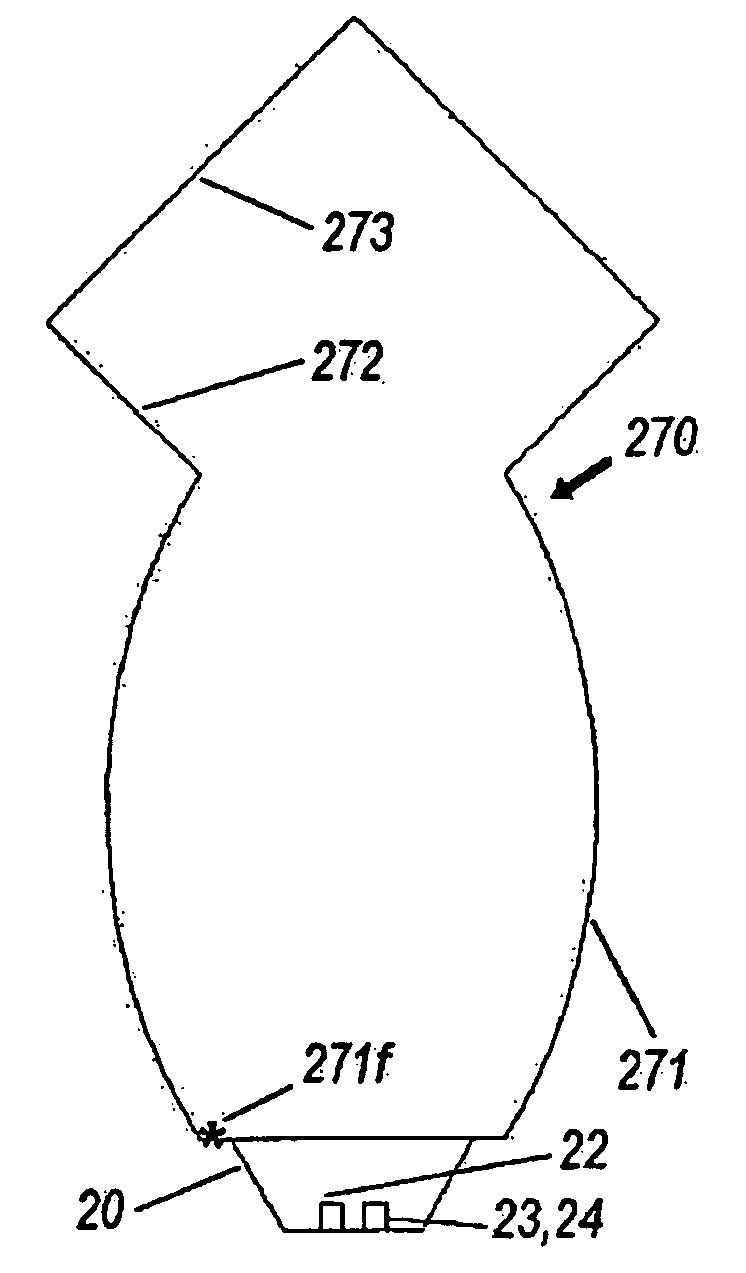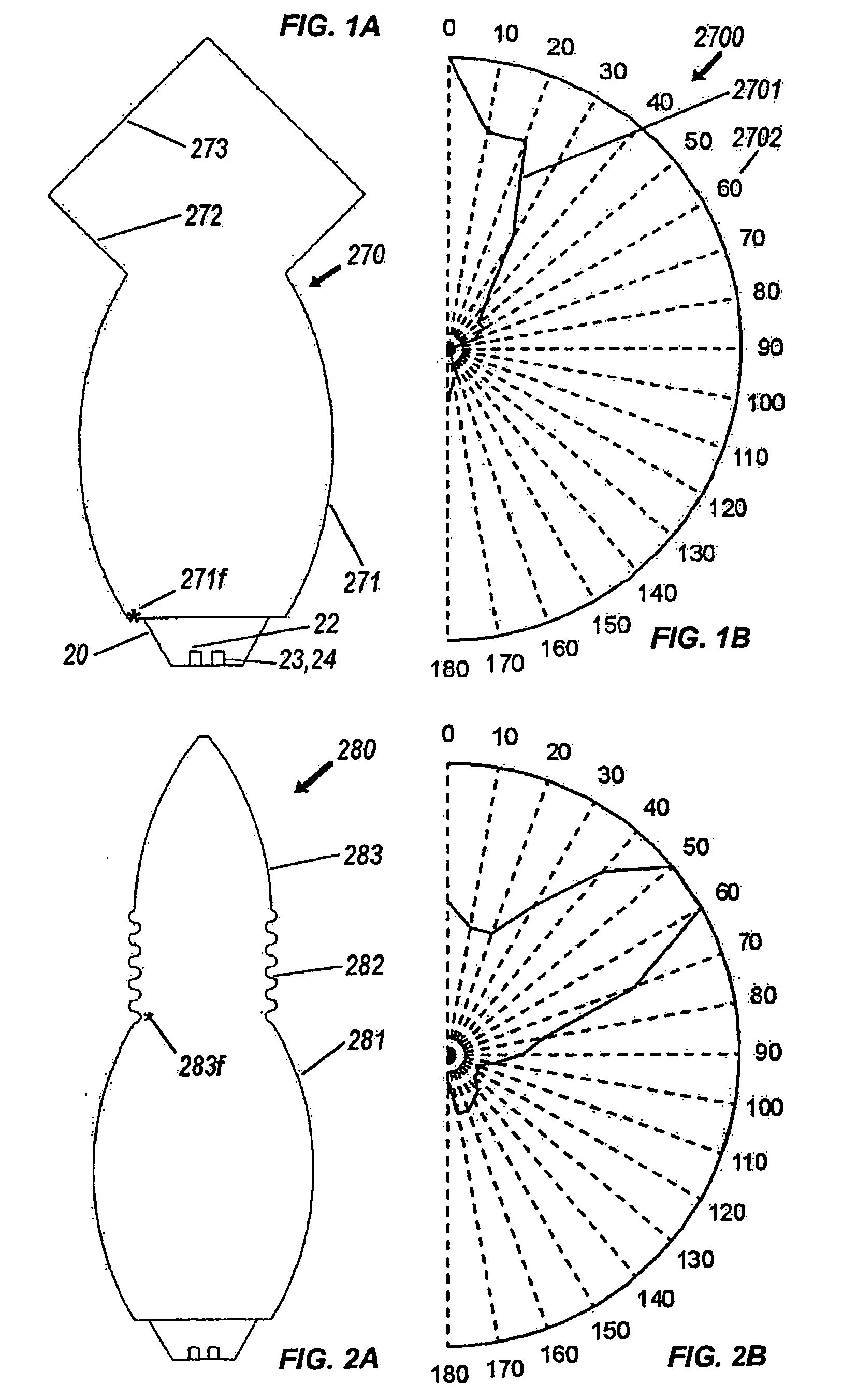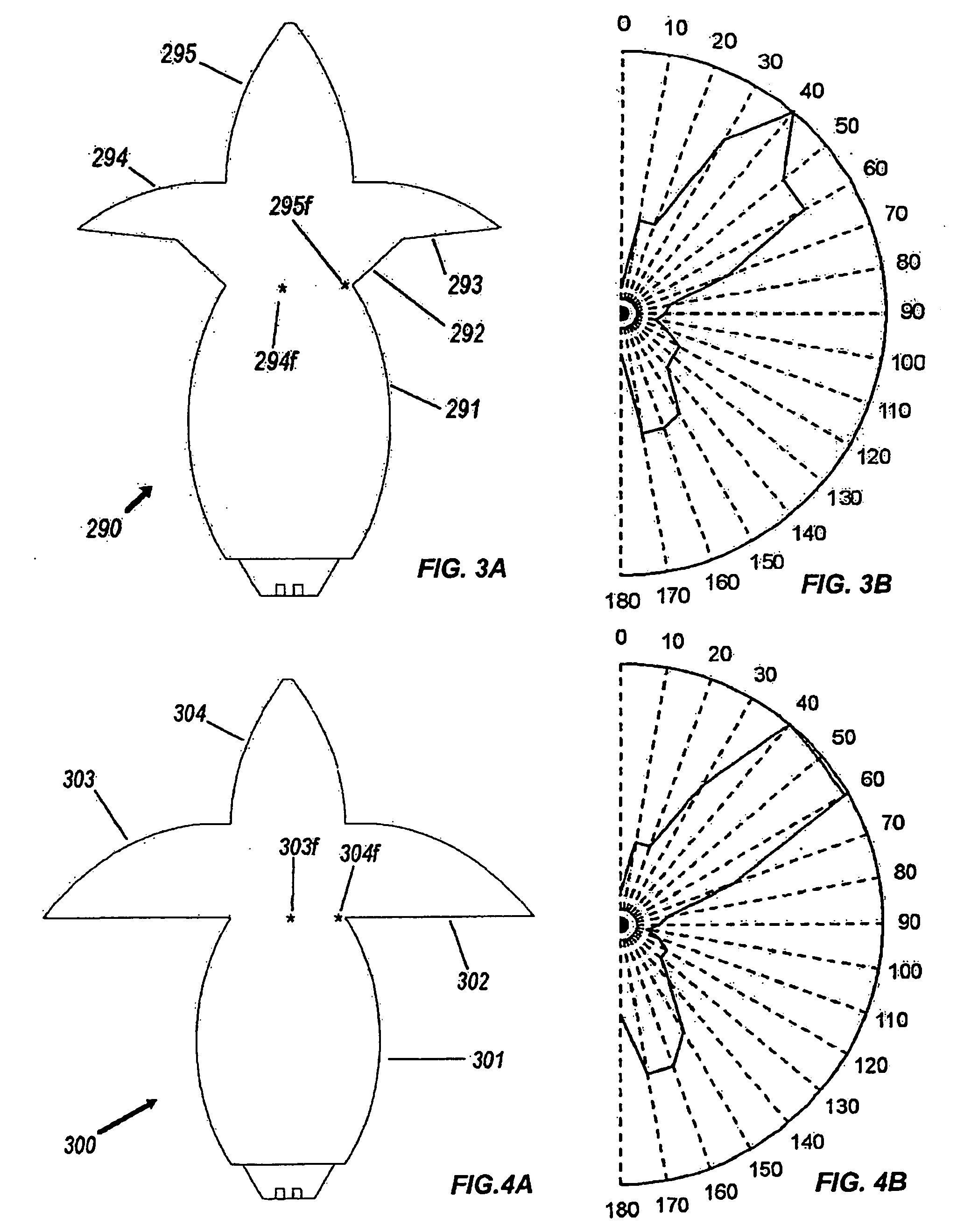Optical device for LED-based lamp
an optical device and led-based lamp technology, applied in semiconductor devices for light sources, instruments, lighting and heating apparatus, etc., can solve the problems of led lamps that are not suitable for direct installation into conventional flashlights, led lamps are unsuitable for electrically unsuitable, and led lamps are both unsuitabl
- Summary
- Abstract
- Description
- Claims
- Application Information
AI Technical Summary
Problems solved by technology
Method used
Image
Examples
Embodiment Construction
[0035] The following description of the presently contemplated best mode of practicing the invention is not to be taken in a limiting sense, but is made merely for the purpose of describing the general principles of the invention. The scope of the invention should be determined with reference to the claims.
[0036] The present embodiments provide light sources with predefined far-field intensities. The present embodiments can be utilized in numerous applications. For example, in some applications, the embodiments can be utilized to replace and / or substitute for other types of light sources, such as compact light sources, incandescent light sources, florescent light sources and other light sources. As a further example, the present embodiments can be utilized in replacing incandescent light sources in flight lights and other devices using incandescent light sources.
[0037] The present embodiments can also be utilized with the embodiments described in co-pending U.S. Provisional Patent...
PUM
 Login to View More
Login to View More Abstract
Description
Claims
Application Information
 Login to View More
Login to View More - R&D
- Intellectual Property
- Life Sciences
- Materials
- Tech Scout
- Unparalleled Data Quality
- Higher Quality Content
- 60% Fewer Hallucinations
Browse by: Latest US Patents, China's latest patents, Technical Efficacy Thesaurus, Application Domain, Technology Topic, Popular Technical Reports.
© 2025 PatSnap. All rights reserved.Legal|Privacy policy|Modern Slavery Act Transparency Statement|Sitemap|About US| Contact US: help@patsnap.com



